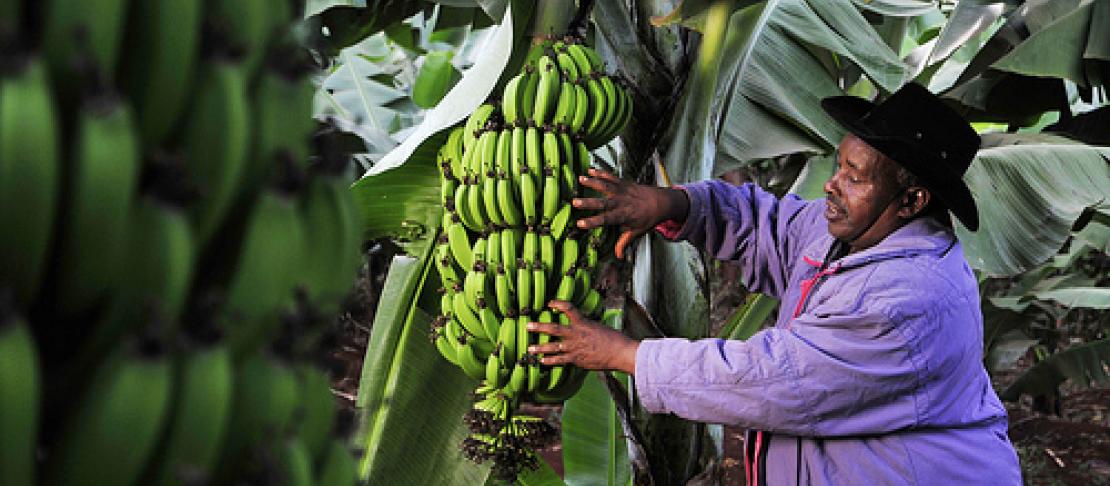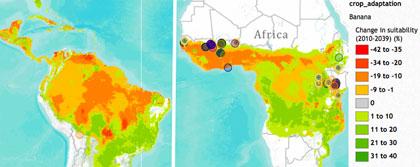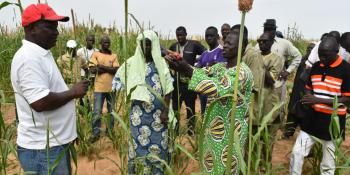Banana boom and bust as climate changes

For bananas and plantains, climate change may significantly alter both yields as well as vulnerability to diseases, which would affect the food security and incomes of millions of Africans and Latin Americans. The East African Highland Banana, for example, is a starchy staple for 80 million people in Africa alone. Zoom in to see area harvested (2009) for the East Africa highland banana.
The research comes from new studies on "climate proofing" key crops across the tropics. The studies by the CGIAR Research Program on Climate Change, Agriculture and Food Security (CCAFS) highlight how climate change will impact crops that are critical to food security in the developing world, and what adaptation strategies can help reduce these impacts.
You can now explore the data behind the studies together with photos and videos of farmers in the affected regions on the newly launched Adaptation and Mitigation Knowledge Network. This platform brings information from diverse sources onto an interactive map, to help build a rich understanding of the issues and impacts.
Researchers find that in the lowland tropics, where temperatures are already extremely high, even slight temperature increases could damage banana production or eliminate it altogether. Such areas include coastal West Africa, the Amazon, the Atlantic coast of Colombia, and many other coastal areas of Latin America and the Caribbean.

In cooler areas, mostly of eastern and southern Africa, increased temperatures are expected to favor banana production, partially offsetting losses elsewhere. This benefit assumes, however, a significant investment in research and technology to support shifting production to more favorable areas. Zoom into the regions in eastern and southern Africa which will see increased banana productivity.
Warmer weather raises banana disease risk
 Climate change could affect banana diseases as well, such as black leaf spot, also known as black sigatoka. The use of fungicides to control this disease accounts for half the total investment in production of Cavendish banana – the world's most popular export banana and a critical source of income for developing countries. Americans alone consume some 8 billion pounds of Cavendish each year, most of them exported from Latin America.
Climate change could affect banana diseases as well, such as black leaf spot, also known as black sigatoka. The use of fungicides to control this disease accounts for half the total investment in production of Cavendish banana – the world's most popular export banana and a critical source of income for developing countries. Americans alone consume some 8 billion pounds of Cavendish each year, most of them exported from Latin America.
It is known that black leaf spot suitability could be affected by very warm weather or by very cold weather. Climate change could have negative impacts on some regions where pathogens will be more suitable like Northern Vietnam. View how black sigatoka suitability increases in Northern Vietnam.
Conversely, climate change might spell good news for the the banana-producing regions of Central America and the Atlantic coasts of Brazil, Colombia, and Venezuela, where disease pressure may in fact decrease. See how the suitability of black sigatoka decreases in Central and South America.
Updated continually with new data, the Adaptation and Mitigation Knowledge Network is an initiative of CCAFS that draws on information from the CGIAR centers and partners. This story was written with contributions from Flora Mer, Osana Bonilla-Findji, and Nathan Russell (CIAT).


